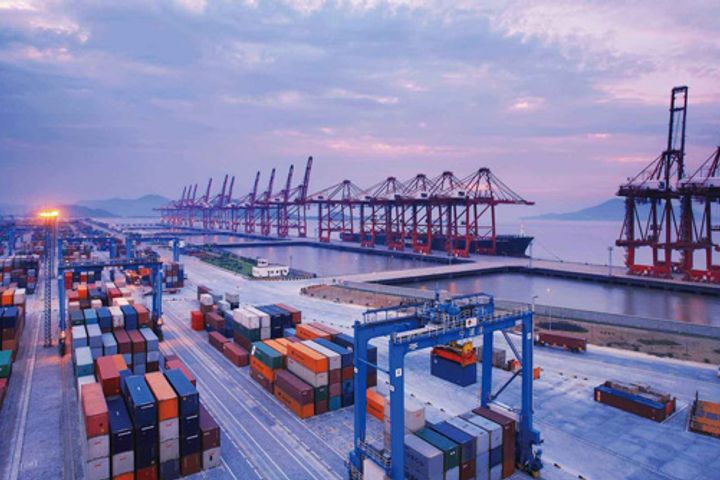 China's Zhoushan Port Aims to Become Northeast Asia's Bonded Fuel Filling Center
China's Zhoushan Port Aims to Become Northeast Asia's Bonded Fuel Filling Center(Yicai Global) June 14 -- As the starting point of the Maritime Silk Road, the Zhoushan port in Ningbo city in East China's Zhejiang province looks to establish itself as a bonded fuel oil filling center in northeast Asia.
The Zhoushan port authority will make every effort to build an international oil storage, transportation and processing base, and cement partnerships with global oil merchants, said Mao Jianhong, president of Zhejiang Provincial Seaport Investment & Operation Group and chairman of Ningbo-Zhoushan Port Group.
In doing so, Zhoushan port will rely on local green petrochemical and oil storage and transportation facilities, thus facilitating the internationalization of oil storage and transportation trading in Zhejiang Free Trade Zone.
Mao made these remarks during a meeting with media representatives on the sidelines of an international forum on the 21st Century Maritime Silk Road, one of the two components of President Xi's Belt and Road Initiative, a grand plan for a vast infrastructure and trade route boasting a major network of railroads, highways, ports and pipelines embracing the continents of Asia, Europe and Africa.
Distribution Hub
The Zhoushan port also aims to build an iron ore distribution center for the Asia Pacific region, and deepen cooperation with foreign iron ore giants to scale up distribution operations.
"We will speed up the construction of a marine service base and establish the port as a bonded fuel filling center in Northeast Asia and as an international mixed ore trading center," Mao said.
The Zhoushan port will also build a grain and oil distribution and processing center and an international grain and oil industry park. It will set up a commodity trading center, promoting electronic and spot trading activities, he added.
It will also encourage shipping companies and organizations operating in the areas of insurance, arbitration, trade and finance and services to base their operations at the port.
The Zhoushan port is divided into 19 sections and has 157 berths above 10,000 tons, with a design throughput of 774 million tons. Of all the ports in the Chinese mainland, it has the highest number of large and extra-large deep-water berths. The container throughput capacity of the port is nearly 13 million twenty-foot equivalent units.
As of February, the port had set up trade channels with more than 600 ports in over 100 countries and regions, with 247 shipping routes established, of which 120 are ocean routes.
Editor: Mevlut Katik